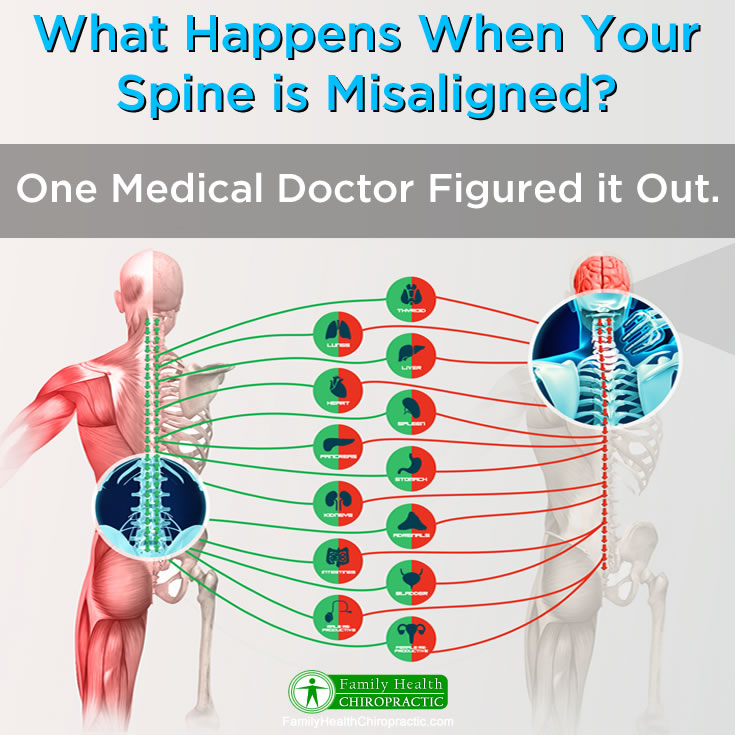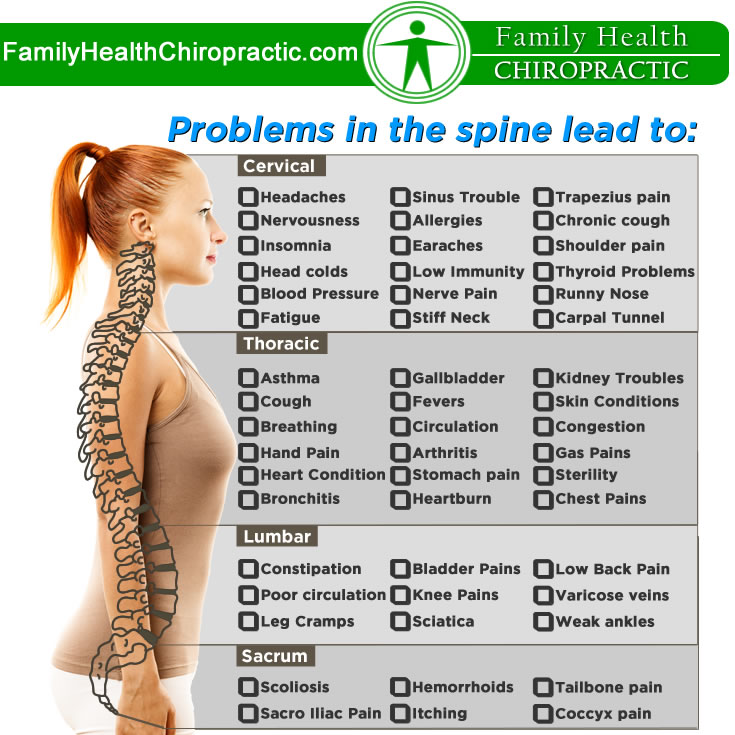Why don’t some MDs believe in Chiropractic?
This is a question many of my patients ask all I can really say is that the doctor has never studied Chiropractic or possibly doesn't understand the physiology associated with the function of the spine and human health. It's pretty clear in the medical literature that the spine plays a central role in the function of our brain and nervous system. To say that “chiropractic” care is unnecessary to to say that influencing the brain and nervous system are unnecessary.
Honestly, I've personally had nothing but good experience working with MDs and many of them won’t stop their patients from going to a Chiropractor (including myself). In some cases they're relieved that their problem case is going elsewhere. That said, I certainly know that many MD's won't suggest a Chiropractor either. Part of the problem is that the medical profession has been dragging its heels in investigating Chiropractic. And even though we are now seeing more and more positive research looking at spinal manipulation and its impact on the nervous system come out, research has been around for quite some time… dating back to the 1920's even!!!
Long ago, Dr. Henry Winsor, a medical doctor in Haverford, Pennsylvania felt that Chiropractic should be investigated.
“I wonder how Chiropractors can claim such good results” he wondered. “They claim that by ‘adjusting’ the fifth thoracic vertebrae, between the shoulder blades, they can relieve stomach troubles and ulcers, by ‘adjusting’ a lumbar vertebrae they can relieve menstrual cramps, by ‘adjusting’ the fifth cervical vertebrae they can correct thyroid conditions and so on with kidney disease, constipation, heart disease, lung disease, and many other conditions, but how can they do that? We M.D.s criticize them, but what if they really have discovered a new drugless way to treat disease?”
The Winsor Autoposies
After graduating medical school, Dr. Winsor investigated Chiropractic and Osteopathic literature and was inspired to perform an experiment. He would dissect human and animal cadavers to see if there was a relationship between any diseased internal organs discovered on autopsy and the vertebrae associated with the nerves that went to the organs.
Concerned and skeptical with what he was hearing about chiropractic care, Dr. Winsor set out to disprove the theory that a Chiropractic adjustment could influence any area of the body outside of the spine once and for all. So, he began his own research.
Dr. Winsor figured that if he dissected the spines of the deceased and proved no correlation between the health of the spine and organ disease or dysfunction, he would put this entire theory to rest. So, he got access and permission to dissect and analyze the spines of 50 human cadavers. His findings sent shock waves throughout the medical profession.
Not only did Dr. Winsor find a link between the health of the spine and function of organs, he noted a direct correlation between the recorded diseased organs and the alignment of their spine in that area. Out of 221 diseased organs, he found 212 links between a curvature of the spine in the area of the nervous system that controlled that diseased organs. In other words, whenever there was a diseased organ, there was a misalignment in the spine that controlled the nervous system function to that organ. These findings were revolutionary in understanding the explanation for why so many patients were experiencing health benefits and disease reduction to specific organs after starting to receive specific Chiropractic adjustments. And after evaluating the 9 organ problems with no apparent relationship to the spine, it was determined that the connection was still present because the nervous system has multiple areas of the spine that influence organs. In the end, a 100% correlation occurred between the abnormal alignment and condition of a specific area of the spine and the nervous system that supplied the corresponding organ.
- HEART DISEASE All 20 cases of heart and pericardium conditions had the upper five thoracic vertebrae (T1-5) misaligned.
- STOMACH DISEASE Nine cases of stomach disease all had spinal misalignments in the mid-dorsal or thoracic spine (T5-9),between the shoulder blades.
- LUNG DISEASE Twenty-six cases of lung disease had spinal misalignments in the upper dorsal region (T1-4), an area slightly below the neck.
- LIVER DISEASE Thirteen cases of liver disease were associated with misalignments in the lower mid-dorsal region (T5-9).
- GALLSTONES Five cases of gallstone disease associated with related spinal misalignments (T5-9).
- PANCREAS Three cases of pancreas disease associated with related spinal misalignments (T5-9).
- SPLEEN Eleven cases of spleen disease associated with spinal misalignments KIDNEY Seventeen cases of kidney disease had the lower dorsal (T5-9) vertebrae out of alignment.
- PROSTATE AND BLADDER DISEASE Eight cases of prostate and bladder disease had the lower back vertebrae misaligned (L1-3)
- UTERUS Two cases of uterus conditions (L2).
- KIDNEY DISEASE All 17 cases of kidney disease had misalignments in the lower thoracic (T10-12).
Dr. Winsor’s results were published in the respected medical journal, The Medical Times, and can be found in any medical library. But Dr. Winsor was not alone in his findings for similar studies by other researchers over the next few decades would confirm his initial conclusions.
A WELL ALIGNED SPINAL COLUMN IS ESSENTIAL FOR A HEALTHY BODY
So although many medical doctors are ignorant of the relationship of the spinal column to disease, the medical literature contains many examples proving Chiropractic’s theory and effectiveness.
In the end, the same doctor that set out to debunk the truth about Chiropractic and its influence on organ function proved the opposite. Chiropractic helps family members of all ages get and keep their life back without the use of drugs or surgery. And even up until today, this study serves an important role to help explain the necessity for all family members to receive regular spine and nervous system evaluations all throughout life to achieve an increased health expression.
Reference: Winsor, H. Sympathetic segmental disturbances — II. The evidences of the association, in dissected cadavers, of visceral disease with vertebral deformities of the same sympathetic segments, The Medical Times, November 1921, pp./ 267-271





